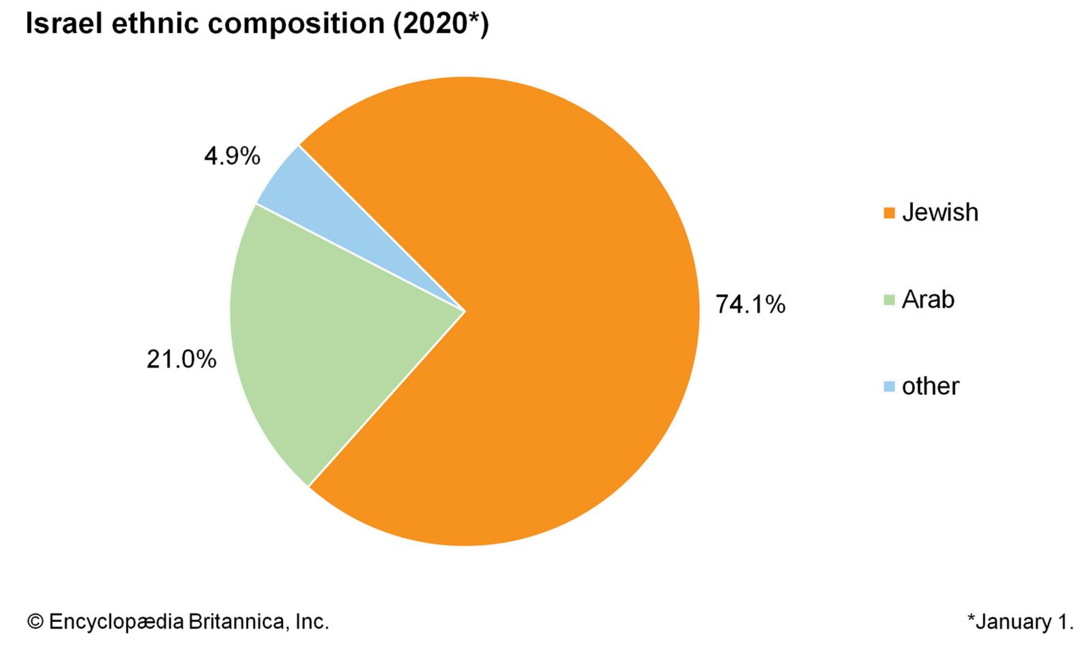Britain took control of the territory known as Palestine after the Ottoman Empire was defeated in World War I. In those lands, the population consisted predominantly of Arabs; the Jews were a minority. From the 1920s to the 1940s, the number of Jews arriving there grew (“Origins and Evolution of the Palestine Problem”). Violence – between Jews and Arabs and against British rule – increased. In 1947 the UN voted to partition Palestine into separate Jewish and Arab states, and Jerusalem became a global metropolis. This plan was accepted by Jewish leaders but rejected by the Arabs and was never implemented (“Origins and Evolution of the Palestine Problem”). Many Palestinians were against the emergence of the state of Israel, and a war broke out, a peace agreement on which was never reached (“Origins and Evolution of the Palestine Problem”). These are the main points that are important to mention from the history of the Israeli-Palestinian conflict.
Israeli security forces are now conducting large-scale operations to fight terrorism in the West Bank. Several rockets were fired from the Gaza Strip toward Israel, indicating that the conflict is still going strong (Fabian). The new formula for a Palestinian-Israeli settlement suggests a kind of exchange of Iran for Palestine. In the future, it should be expected that neither the Arab world nor the United States will push Israel into negotiations. Pressure will be put on the Palestinians not to accept a compromise with Hamas and not to allow Iran to influence the situation in the region (Beauchamp). However, the unresolved issues will come to light one way or another and will constantly fuel the radical sentiments among both the Palestinians and the Israeli Arabs.
The celebration of Jerusalem Day is perceived by the Palestinians as a provocation and a painful reminder of the tragedy. Israel’s refusal to share Jerusalem with the Palestinians prevents a solution to the Palestinian-Israeli conflict (Thrall). Moreover, decades of occupation of the West Bank (1967-2022), the continuing blockade of the Gaza Strip, and the ethnic inequality of Arabs in Israel are the main factors provoking outbreaks of conflict (Thrall). The reasons vary, and understanding each is essential to establishing peace between the two states.
The following will look at the demographic characteristics of Israel as a country. The majority of Israel’s population is Jewish, but Arabs also make up an important part, about 20 percent (Figure 1). Israel has the largest Jewish population in the world, and thanks to high birth rates and repatriation, it continues to grow at a steady pace. There are demographic differences between the percentage of the Arab and Jewish populations in Israel.

The core of the Immediate Response Force (IRF) is the brigade combat team of the 82nd Airborne Division. In the IRF, this division can be deployed if necessary to suppress national liberation movements. The Noncombative Evacuation Operation (NEO) is supposed to determine the landing site, then execute it and bring the tactical unit to combat readiness (Kearby et al. 42). Presumably it is possible to conduct an operation in the West Bank, but it could be complicated by the enemy’s use of drones (Kanwal 241). This is the strategy of using the IRF to resolve the Israeli-Palestinian crisis.
The results of polls among residents of Israel about the crisis associated with the conflict between Israel and Palestine demonstrate the general attitude of the population about the situation. It should be noted that support for the two-state solution is declining — the lowest level of support is now being observed (“Poll Summary”). An important conclusion from the polls is that both Palestinians and Jews do not expect the creation of a Palestinian state within the next five years (“Poll Summary”). This shows that there are still no clear ways to resolve the national conflict.
Works Cited
“1947: The International Community Says YES to the Rstablishment of the State of Israel.” Israel Ministry of Foreign Affairs, 2018.
Beauchamp, Zack. “In Defense of the Two-State Solution.” Vox, 2021.
Fabian, Emanuel. “3 Rockets Fired from Gaza at Israel; One Falls Short, Others Cause No Damage.” The Times of Israel, 2022.
“Israel Ethnic Composition (2020).” Encyclopedia Britannica, 8 July 2019, www.britannica.com/place/Israel/People.
Kanwal, Aroosa. “Dreaming with Drones: Palestine under the Shadow of Unseen War.” The Journal of Commonwealth Literature, vol. 57, no. 1, 2022, pp. 240–258.
Kearby, John, et al. “Modeling and Transportation Planning for US Noncombatant Evacuation Operations in South Korea.” Journal of Defense Analytics and Logistics, vol. 4, 2020, pp. 41-69.
“Origins and Evolution of the Palestine Problem: 1917-1947 (Part I).” The United Nations, 2021.
“Poll Summary: Palestinian-Israeli Pulse.” Palestinian Center for Policy and Survey Research, 2017.
Thrall, Nathan. “Israel-Palestine: The Real Reason There’s Still No Peace.” The Guardian, 2018.